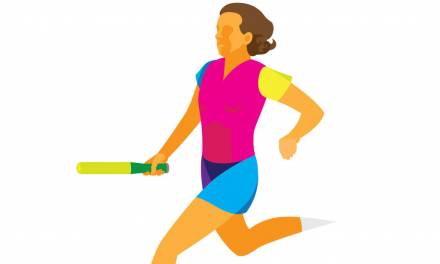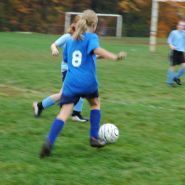According to gov.uk, marginalised groups include “ethnic minorities, women and girls, people with physical and mental disabilities, and Lesbian Gay Bisexual Transgender Queer and Intersex (LGBTQI) people”. Incorporating those students who may feel marginalised is essential when creating a positive learning environment. Below we suggest ways in which this can be achieved.
One of the key barriers to participation for girls, and especially those from certain religious backgrounds, is having to participate alongside or close to boys. As well as having single-sex classes, if your school is ethnically diverse, also consider where you timetable your classes. For example, if the timetable scheduled all boys’ groups inside and all girls’ groups outside, this would prevent any religious barriers from coming into effect.
Another major barrier for ethnic minorities is language. In a lesson, this can be overcome by using many demonstrations and limiting verbal instruction. Failing this, ask the pupils to use their phones as a translator to ensure they fully understand the task or produce instructions using diagrams and pictures. Finally, in times of religious practices, for example, Ramadan, try and timetable activities which include limited physical exertion. This could include Boules, mini golf or darts which can form part of a highly engaging games module.
Engage marginalised groups
One of the main barriers in schools for the LBGTQI community is the changing facilities. If the school doesn’t have a spare changing facility, consider the use of a clean toilet cubicle for private changing. Another solution to the difficulty in changing that many students face could be to allow your pupils to arrive in PE kit and leave in their kit at the end of the school day.
Finally, it may be a great opportunity to ask for student feedback from this cohort – what are the perceived barriers in your school? It is also very important to listen for any derogatory language and challenge this form of discrimination in front of other students. This helps to send a clear message that it is not acceptable and you are fully supporting the affected student/group.
Within a year group, at least one pupil will likely have a physical disability. Out of all marginalised groups, these students are often the most challenging to cater for in mainstream education as the number of pupils with similar needs is limited. The best way to fully engage those with a physical disability is to get to know the pupil. Spend some time in your lessons getting to know exactly what the students can do, what they find easy and what is more challenging. For example, a pupil with the use of just one hand will often be very good at catching but may struggle when holding a bat in cricket. Also, consider where you position them in certain sports. For example, it would be very difficult to ask a student with limited leg mobility to be a centre in netball due to the rapid changes of direction required, but they may be able to take on the role of goal shooter where less movement is required.
For students with additional learning needs, the easiest and most effective method to promote full inclusion is by limiting the number of directions. As a general guide, 2 or 3 clear points should be given during each learning phase – any more than this and all new information may be forgotten. Other methods include manual and mechanical guidance which allow these pupils to develop confidence and reduce any risk of injury whilst experiencing what a successful movement pattern should feel like. For more information please click here.
In addition to this, if you would like to learn more about a platform that can provide engaging lesson plans and scheme of work to reduce teacher workload visit PE Office. The system can provide a lesson bank of resources that assists teachers in delivering engaging PE lessons. You can also look at all the resources on offer here.










